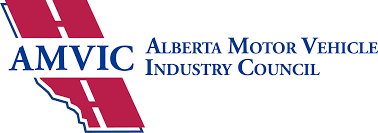Installing a Generator in a 5th Wheel
 If you want to run many appliances in your 5th wheel trailer, you will need either shore power or a generator. Here’s some information on installing a generator in your 5th wheel, from the folks at Schwab's RV World in Leduc, near Edmonton, Alberta. Whenever electricity and carbon monoxide are involved, it’s critical to do things right, so please do your research before embarking on this project. You are always welcome to bring your questions to us and to book time in our service department and let the experts take care of your projects.
If you want to run many appliances in your 5th wheel trailer, you will need either shore power or a generator. Here’s some information on installing a generator in your 5th wheel, from the folks at Schwab's RV World in Leduc, near Edmonton, Alberta. Whenever electricity and carbon monoxide are involved, it’s critical to do things right, so please do your research before embarking on this project. You are always welcome to bring your questions to us and to book time in our service department and let the experts take care of your projects.
Power Requirements
Think about how much power you will need in your 5th wheel. While lights don’t draw much power, any appliance that heats and cools does. If you wish to run a refrigerator, heater, microwave, coffee maker, toaster, or hairdryer, it will be too much for your battery.
Shore Power or Generator
When you need more power than your batteries can deliver, you can plug into provided hookups and utilize shore power. This expression, taken from boating, refers to plugging into electricity provided by the electrical grid, just like at your house. Shore power will be adequate to power all of your appliances at once. It is easy, simple, and convenient.
If shore power is not available, you can use a generator. A generator burns fuel (gasoline, diesel, or propane) and generates electricity from the resulting energy.
Built-In Generators Versus Portable Generators
Many 5th wheels, travel trailers, and motorhomes come equipped with a built-in generator. This has many advantages. The fuel is fed directly from the existing propane, gas, or diesel tank, so you don’t need to pay attention to periodic refueling. It’s also hard-wired into the rig's existing electrical system, so it’s simple and seamless to use.
A portable generator is the same as what you might use at home for emergencies or for construction, hunting, fishing, and camping off the grid. These need to be refueled routinely in order to continue generating electricity. Instead of plugging into shore power, you would plug your 5th wheel into the generator.
Safety Considerations
Generator exhaust contains harmful carbon monoxide. Built-in generators have safety features and mitigation built in. If you are using a portable generator, you must observe safety precautions to make sure that people aren’t endangered by carbon monoxide.
- Place your generator at least ten feet away from your 5th wheel.
- Make sure the exhaust is directed away from the 5th wheel.
- Do not place your generator under your awning.
- Have carbon monoxide detectors inside your 5th wheel. Test and replace batteries regularly.
Other Considerations
Some RV parks and campgrounds restrict generator use. Make sure you know what the regulations are, and obey them. Be a good neighbor and take steps to make sure other campers aren’t impacted by the noise or fumes of your generator.
Be Careful
If you wish to add a generator to your fifth wheel, or to upgrade or supplement your existing generator, take this process very seriously. Failure to do so could cause injury or death in terms of carbon monoxide poisoning. It could also cause costly damage to your existing electrical system, so please do your research and rely on qualified experts for advice. We welcome your questions here at Schwab's RV World in Leduc, near Edmonton, Alberta.

